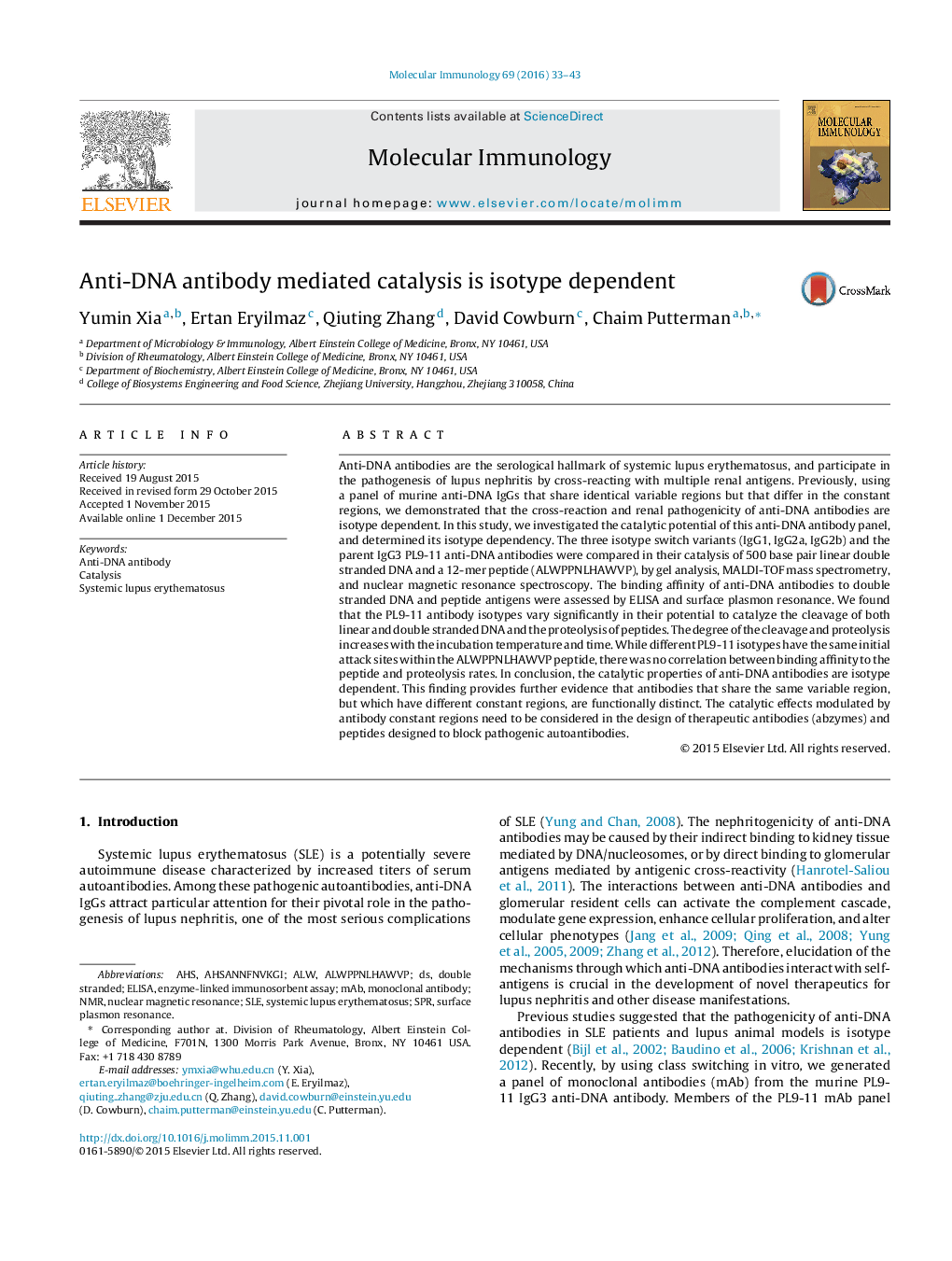| Article ID | Journal | Published Year | Pages | File Type |
|---|---|---|---|---|
| 2830601 | Molecular Immunology | 2016 | 11 Pages |
•Catalytic activities of anti-DNA antibodies are not only a function of the variable region, but are also isotype dependent.•DNA cleavage and proteolysis by anti-DNA antibodies increase with incubation time and temperature.•The design of antibodies for therapeutic purposes should include consideration of the catalytic effects contributed by the antibody constant region.
Anti-DNA antibodies are the serological hallmark of systemic lupus erythematosus, and participate in the pathogenesis of lupus nephritis by cross-reacting with multiple renal antigens. Previously, using a panel of murine anti-DNA IgGs that share identical variable regions but that differ in the constant regions, we demonstrated that the cross-reaction and renal pathogenicity of anti-DNA antibodies are isotype dependent. In this study, we investigated the catalytic potential of this anti-DNA antibody panel, and determined its isotype dependency. The three isotype switch variants (IgG1, IgG2a, IgG2b) and the parent IgG3 PL9-11 anti-DNA antibodies were compared in their catalysis of 500 base pair linear double stranded DNA and a 12-mer peptide (ALWPPNLHAWVP), by gel analysis, MALDI-TOF mass spectrometry, and nuclear magnetic resonance spectroscopy. The binding affinity of anti-DNA antibodies to double stranded DNA and peptide antigens were assessed by ELISA and surface plasmon resonance. We found that the PL9-11 antibody isotypes vary significantly in their potential to catalyze the cleavage of both linear and double stranded DNA and the proteolysis of peptides. The degree of the cleavage and proteolysis increases with the incubation temperature and time. While different PL9-11 isotypes have the same initial attack sites within the ALWPPNLHAWVP peptide, there was no correlation between binding affinity to the peptide and proteolysis rates. In conclusion, the catalytic properties of anti-DNA antibodies are isotype dependent. This finding provides further evidence that antibodies that share the same variable region, but which have different constant regions, are functionally distinct. The catalytic effects modulated by antibody constant regions need to be considered in the design of therapeutic antibodies (abzymes) and peptides designed to block pathogenic autoantibodies.
